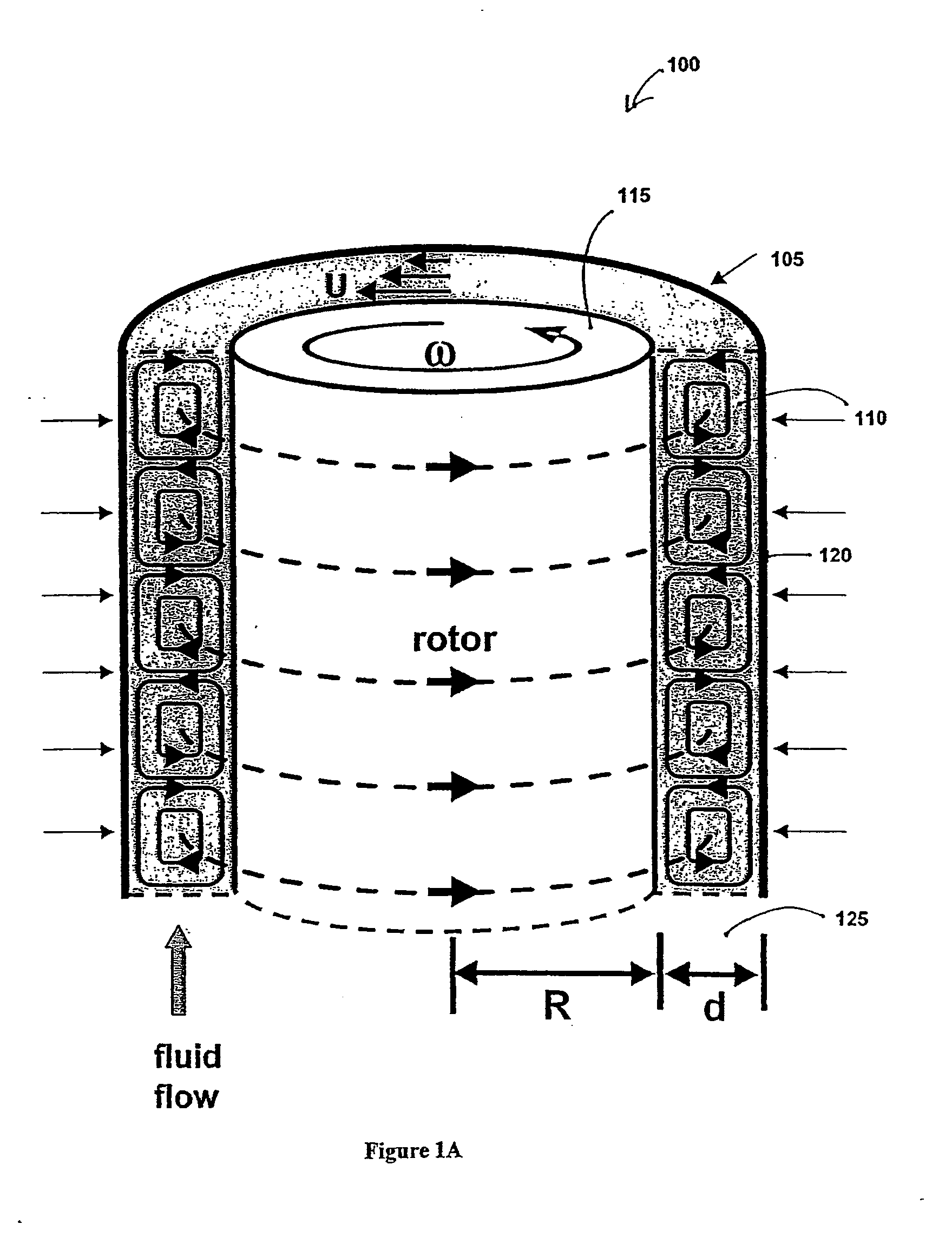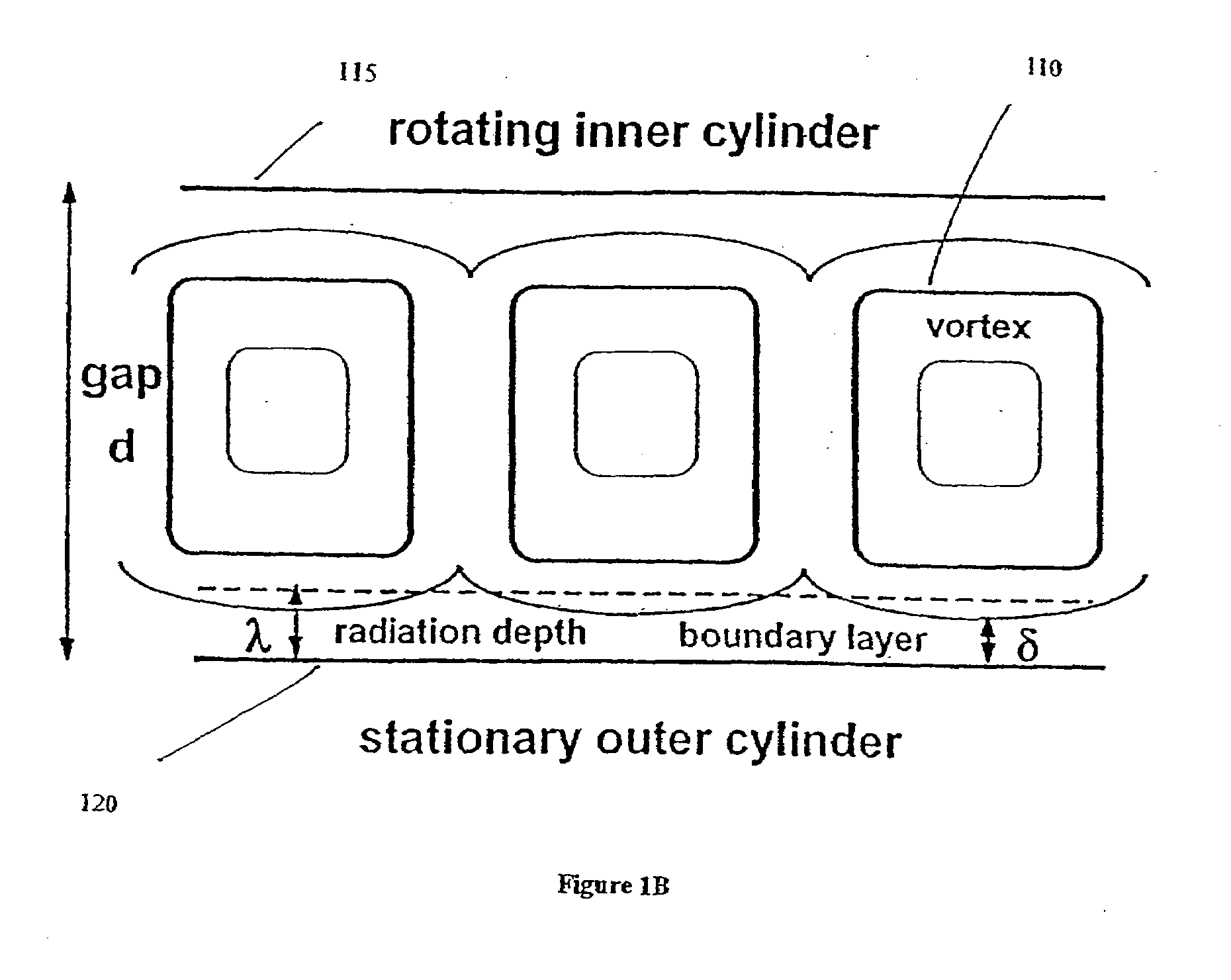Systems and Methods for Disinfection
- Summary
- Abstract
- Description
- Claims
- Application Information
AI Technical Summary
Benefits of technology
Problems solved by technology
Method used
Image
Examples
example 1
Taylor Number
[0077]Values for the inactivation of E. coli in the Taylor column were recorded at increasing rotation rates up to roughly 300 rpm corresponding to a Taylor number of 1000. The data shown in FIG. 6 indicate a minimum of a 4-log reduction in surviving E. coli in units of colony forming units per ml or cfu / ml at a value of Ta=100 or roughly 30 rpm (˜0.5 Hz). Although the value of Ta=100 is somewhat above the critical value of Ta=41 for the onset of laminar Taylor vortices, Ta=100 represented an incremental reduction of roughly 1 or 2-logs in cfu / ml compared to other values of Ta with comparable flow rates as shown in both FIGS. 6 and 7. At roughly Ta=600 the vortices become turbulent and the residence time distribution of the fluid broadens such that the characteristics of the Taylor column approach that of a completely mixed flow-through reactor. For values of 41<Ta<600 in the laminar range the reactor characteristics approach that of ideal plug flow with decreasing Ta.
[...
example 2
Flow Rate
[0079]Values of E. coli inactivation were recorded at increasing flow rates for three values of the Taylor number Ta=0, 100 and 120. As indicated in FIG. 7 the inactivation levels decreased with higher flow rates for all values of Ta since the radiation dose ∝ 1 / q where q is the volumetric flow rate through the reactor. A value of Ta=100 provides the largest inactivation rates for all recorded flow rates. Significantly, the plot also indicates an increase of over 2-logs for E. coli inactivation compared to simple flow through concentric cylinders (Ta=0) for moderate flow rates of 20 to 40 ml / min.
example 3
Lamp Symmetry
[0080]The effects of lamp location on inactivation were measured and the data are recorded in FIGS. 8 and 9. FIG. 8 with no rotation or Ta=0 demonstrates that channeling of the pathogens occurs between concentric cylinders when the lamps are grouped on the side of the reactor opposite the fluid inlet.
[0081]For the symmetrical case of equidistant lamp location and at Ta=100, FIG. 9 illustrates that an improvement of over a 1-log reduction in surviving organisms was again observed compared to the grouped geometry for moderate flow rates between 2060 ml / min at lower photon dosages. One concludes that there is a significant loss of photons from both reflection and transmission through multiple lamps in close proximity,
PUM
 Login to View More
Login to View More Abstract
Description
Claims
Application Information
 Login to View More
Login to View More - R&D
- Intellectual Property
- Life Sciences
- Materials
- Tech Scout
- Unparalleled Data Quality
- Higher Quality Content
- 60% Fewer Hallucinations
Browse by: Latest US Patents, China's latest patents, Technical Efficacy Thesaurus, Application Domain, Technology Topic, Popular Technical Reports.
© 2025 PatSnap. All rights reserved.Legal|Privacy policy|Modern Slavery Act Transparency Statement|Sitemap|About US| Contact US: help@patsnap.com



